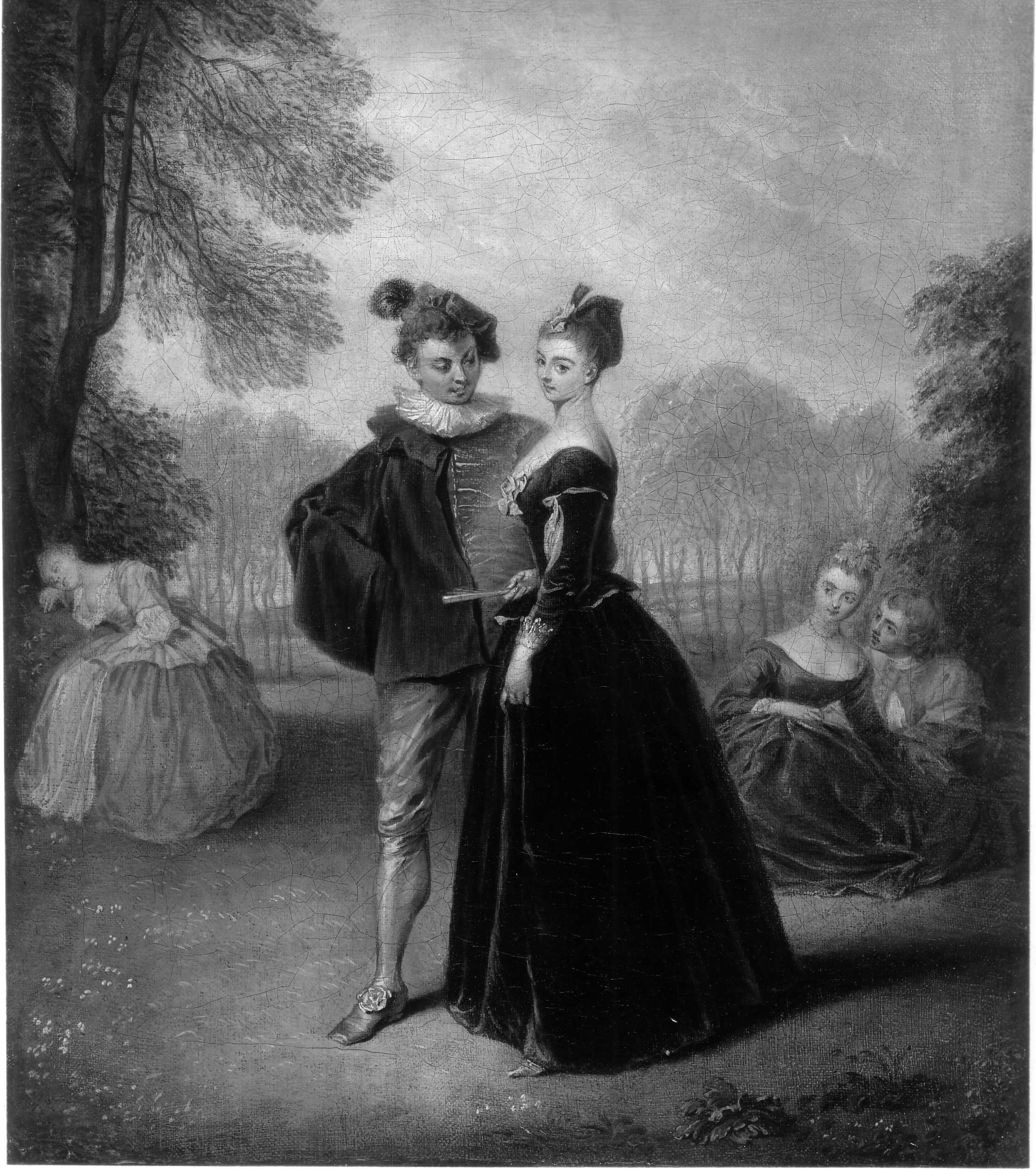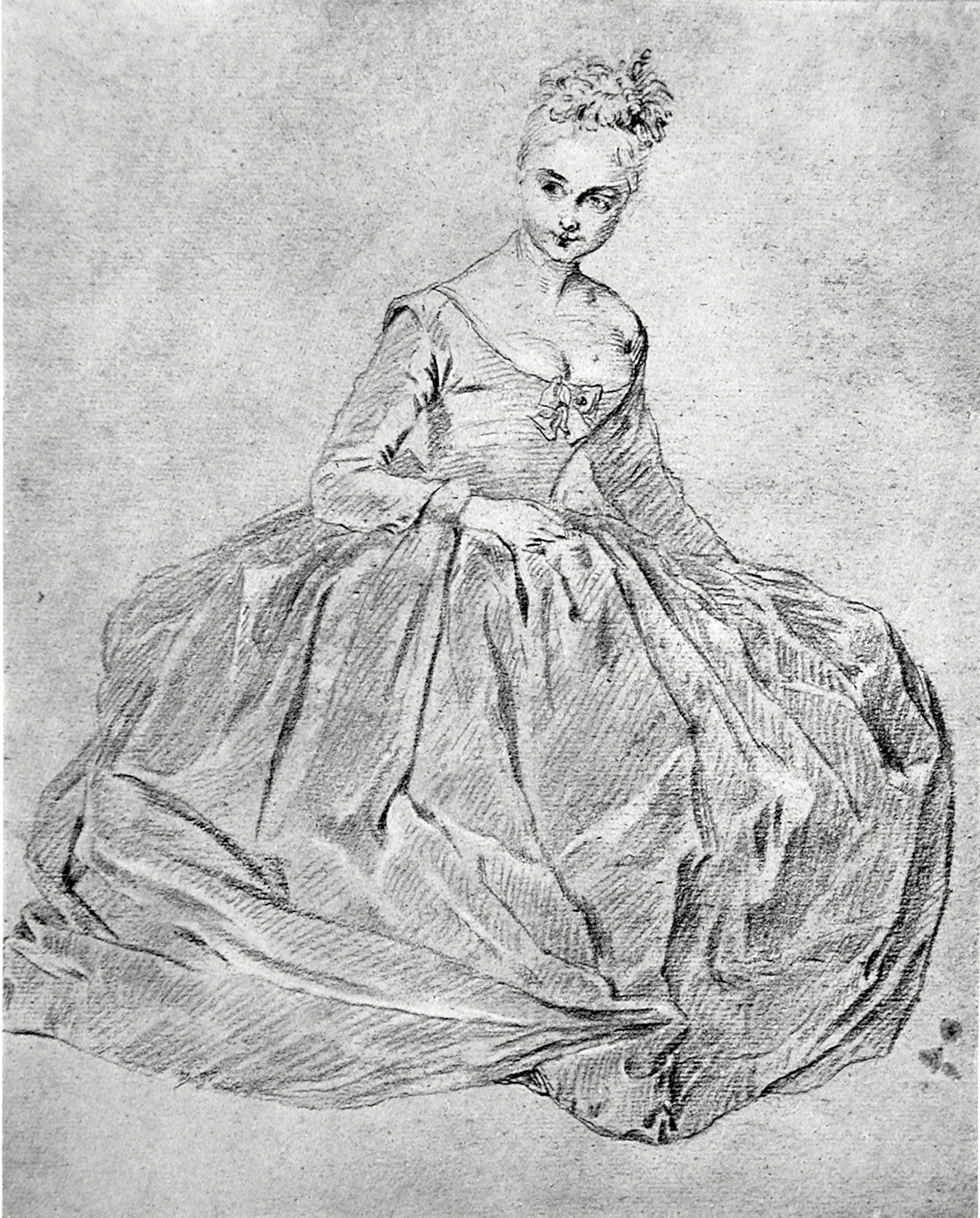The Sieste Master
©Martin Eidelberg
Created March 13, 2011; modified June 28, 2011
Click to Print or Download PDF Version
The 1920s and 1930s were a wonderful era for the study of Watteau’s art. The two-hundredth anniversary of the master’s death occurred in 1921 and was celebrated by the publication of the first volumes of Emile Dacier and Albert Vuaflart’s Jean de Jullienne et les graveurs de Watteau au XVIIIe siècle, Pierre Champion’s Les Vies anciennes de Watteau, and a special volume of the Revue de l’art ancien et moderne that was devoted to Watteau’s art. Not only the master but also his followers basked in the light of public attention during that decade. George Wildenstein’s monograph on Lancret appeared in 1924, Florence Ingersoll Smouse’s tome on Pater followed in 1928, and Robert Rey’s Quelques satellites de Watteau, published in 1931, contained studies on several artists in Watteau’s circle, including Philip Mercier, François Octavien, and Bonaventure de Bar. Nor should one forget the great controversies that broke out in the late 1920s and ’30s over Antoine Quillard.
 |
|
1. Here attributed to the Sieste Master, La Sieste, 34.3 x 28 cm. New York art market. |
2. Philip Mercier, The Happy Encounter, 37 x 30.5 cm. Whereabouts unknown. |
It is in this period of intense activity and scholarly interest that a small fête galante,named La Sieste, emerged (Fig. 1). The painting was presented as a work of Philip Mercier (1689-1760), an artist who although of French parentage was born in Germany, knew Watteau and his circle in Paris, and ultimately settled in England. At that time the picture was owned by Elizabeth Wildenstein, the sister of Georges Wildenstein and the wife of the dealer Louis Paraf.1 It may been she who proposed the title La Sieste. Apparently new on the art market, the canvas was enthusiastically received. It figured in the 1929 Paris exhibition, Le XVIIIe siècle aux champs, and in the 1935 exhibition of French eighteenth-century art in Copenhagen.2 It was also illustrated at the time. Then the painting fell from sight. It is no longer included in any discussions of Mercier’s oeuvre, although its attribution to him was never officially rejected. It was not cited, for example, in John Ingamells and Robert Raines’ catalogue raisonné of Mercier’s works.3 Then, after eighty years of obscurity, the work suddenly reappeared in a New York auction in 2011, with no indication of its previous history and with a new but equally improbable ascription: "attributed to Pierre-Antoine Quillard."4
 |
|
3. Here attributed to the Sieste Master, Study of a woman reclining, sanguine, 14.9 x 16.5 cm. Grenoble, Musée des Beaux-Arts. |
4. Philip Mercier, Seated Woman, sanguine and black chalk, 29.5 x 24.5 cm. Whereabouts unknown. |
Through a serendipitous turn of events, it has been possible to locate a drawing for La Sieste in the Musée des Beaux-Arts of Grenoble (fig. 3). As is evident, it is a preliminary study, presumably drawn from a model, for one of the two reclining woman in the painting. The early provenance of the drawing is unknown but by 1909 when it was published in the museum’s catalogue, it was attributed to Watteau.5 However, it is far from Watteau’s draftsmanship and never was a serious claimant to being by Watteau. In fact, throughout the twentieth century it never appeared in the Watteau literature. In their recent catalogue raisonné of Watteau’s drawings, Rosenberg and Prat rightly rejected the attribution to Watteau but all that they noted was their belief that it was French, executed c. 1720.6
It is apparent that La Sieste has little to do with either Watteau’s, Mercier’s, or Quillard's oeuvres, save for its fête galante subject. The slender bodies and small, expressionless heads are quite unlike Watteau’s ethereal creations and Mercier’s more wooden and solid figures (fig. 2). Similarly, the drawing with its blunt, mechanical strokes is unrelated to Watteau’s and Mercier’s more sensitive drawing styles (fig. 4).7 We are left with the curious conundrum of having a painting and drawing by the same hand but still not knowing whose hand it is. For the time being all we can do is fall back to the traditional solution and create a name: the Sieste Master. That we should have resort to this scheme, usually reserved for late medieval and early Renaissance Notnamers, is curious but nonetheless appropriate, even for the eighteenth century. As Georges Wildenstein wisely pointed out, while the eighteenth-century records of the Académie contain just the names of perhaps five hundred artists, the very incomplete records of the Paris Guild of St Luke contain two thousand names of artists, many of whom cannot be associated with extant works.8 To cite a telling example, the Académie records contain references to an otherwise unknown Monsieur Porlier who was agréé on September 30, 1752, as a “peintre dans le genre des festes galantes.”9Even if he proves to be the painter Charles Vincent Porlier, previously admitted as a master painter in the Academy of St. Luke on January 21, 1747, we still have no works to associate with this name.10 Then there are the countless anonymous painters whose works, faute de mieux, are still classified as “École de Pater” and “École de Lancret” but who were evidently independent artists. Perhaps this small fanfare for the Sieste Master will help reveal additional works by him and, if we are lucky, allow us to retrieve his proper name.
NOTES
1 Her nephew described her unflatteringly as a “dumb animal, ugly, and uppity” (bête, laide et pimbêche). See Daniel Wildenstein, Marchands d’art (Paris: 1999), 39.
2 Le XVIIIe siècle aux champs, exh. cat. (Paris: Bagatelle, 1929), cat. no. 48; Exposition de l’art français au XVIIIe siècle, exh. cat. (Copenhagen: Charlottenburg Palace, 1935), cat. no. 136. The painting was illustrated in L’Amour de l’art 16 (July 1935), 236.
3 John Ingamells and Robert Raines, “A Catalogue of the Paintings, Drawings and Etchings of Philip Mercier,” Walpole Society Journal 46 (1976-78), 1-70.
4 New York, Christie's, January 26, 2011, lot 175.
5 Léon de Beylié, Le Musée de Grenoble: peintures, dessins, marbres, bronzes, etc. (Paris: 1909), XXVII, 147.
6 Pierre Rosenberg and Louis-Antoine Prat, Antoine Watteau, 1684-1721, catalogue raisonné des dessins, 3 vols. (Milan: 1996),3: cat. no. R392.
7 See Eidelberg, “Philippe Mercier as a Draftsman,” Master Drawings 44 (winter 2006), 411-49.
8 Georges Wildenstein, “L’Ami d’Antoine,” in Mélanges, 2 vols. (Paris: 1925-26), 2: 25.
9 Anatole de Montaiglon, Procès-verbaux de l’Académie Royale de Peinture et de Sculpture, 1648-1793, 10 vols. (Paris: 1875-92), 5: 331, 333-335.
10 See Wildenstein, Mélanges, 2: 217
